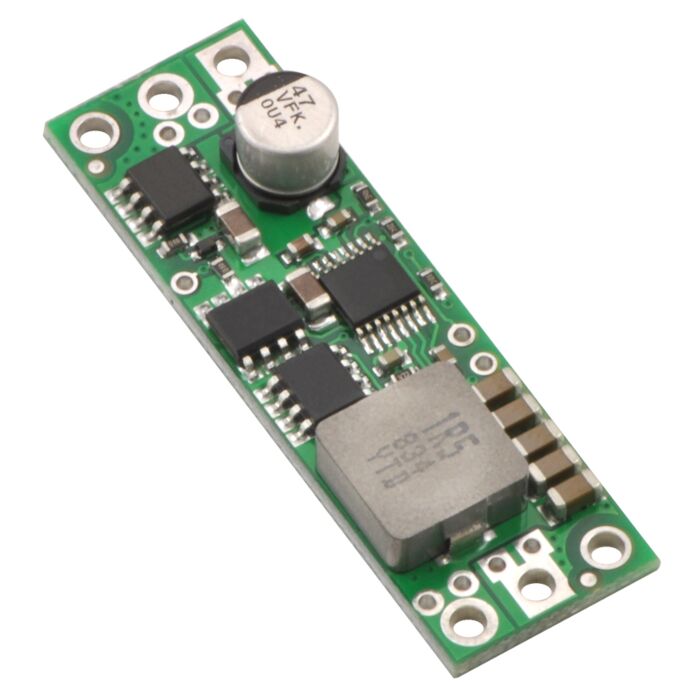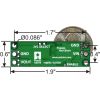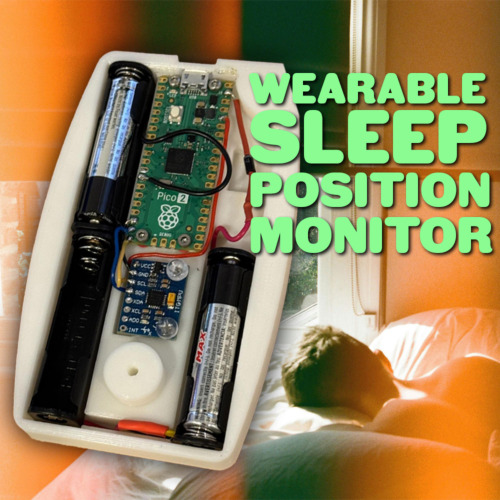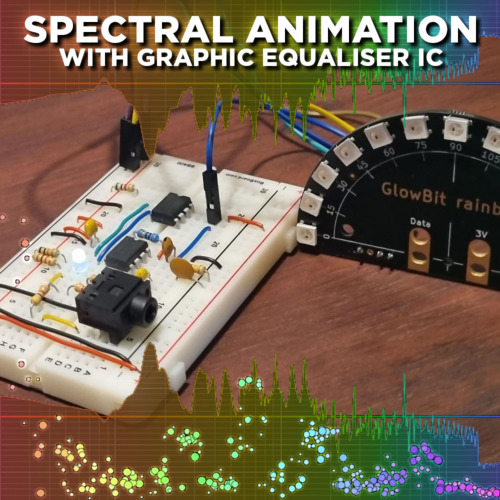Pololu Step-Down Voltage Regulator D15V70F5S3
Retired Product
Search for an alternativeNote: Pololu have released newer D24V90F5 5V, 9A step-down voltage regulators, D24V60F5 5V, 6A step-down voltage regulators, and D24V50F5 5V, 5A step-down voltage regulators that Pololu recommend over this product. The newer regulators have better performance and a higher operating voltage range, and they respond better to error conditions (e.g. they will not latch off when exposed to slowly rising power or a short-circuit).
 |
Overview
These buck (step-down) voltage regulators generate lower, user-selectable output voltages from an input voltage range of 4.5 to 24 V. They are switching regulators (also called switched-mode power supplies (SMPS) or DC-to-DC converters) and have a typical (when the output current is several amps) efficiency of approximately 90%, which is much more efficient than linear voltage regulators, especially when the difference between the input and output voltage is large. The output voltage defaults to 5 V and can be changed to 3.3 V by jumping 3V3 SELECT.
The regulator has under-voltage and short-circuit protection, and thermal shutdown prevents damage from overheating. The board has reverse-voltage protection.
Pololu offer two versions of these higher-current step-down regulators:
- Pololu step-down voltage regulator D15V35F5S3: 5V or 3.3V selectable output voltage, 3.5A continuous in typical applications
- Pololu step-down voltage regulator D15V70F5S3: 5V or 3.3V selectable output voltage, 7A continuous in typical applications
 |
Specifications
- input voltage: 4.5 V to 24 V
- typical continuous output current: 7 A (Actual continuous output current depends on thermal dissipation. See Output Current section below for details)
- output voltage selectable as 5 V or 3.3 V
- 700 kHz switching frequency
- 45 mA typical no-load quiescent current (300 μA typical quiescent current with ENABLE=0 V)
- integrated over-temperature and over-current shutoff
- small size: 1.9" × 0.6" × 0.3" (48 × 15 × 8 mm)
- weight without header pins: 0.2 oz (6 g)
Using the Regulator
 |
| Pololu step-down voltage regulator D15V70F5S3 with included hardware. |
|---|
Connections
The buck regulator has five connections: 3.3 V select (3V3 SELECT), enable (ENABLE), input voltage (VIN), ground (GND), and output voltage (VOUT).
The ENABLE pin can be driven low (under 0.3 V) to turn off the output and put the board into a low-power state that typically draws 300 μA. The board has a 100kΩ pull-up resistor between ENABLE and VIN. The ENABLE pin can be driven high (above 2 V) to enable the board, or it can be connected to VIN or left disconnected if you want to leave the board permanently enabled.
The input voltage, VIN, should be between 4.5 and 24 V. You should ensure that noise on your input does not exceed the 24 V maximum. When power is applied, the input voltage rise time must not be more than a few milliseconds; otherwise, the regulator can latch in an error state that disables its output.
The output voltage, VOUT, is determined by the 3V3 SELECT jumper state. If the jumper is disconnected, the output voltage is 5 V. With the jumper connected, the output voltage is 3.3 V. An input voltage lower than the output voltage will not damage the board, but will cause a lower-than-selected output voltage, so they recommend you avoid powering the board with an input voltage below the selected output voltage.
Warning: Do not change the 3V3 SELECT jumper while the regulator is powered. Doing so can cause the regulator to shut off until power is cycled.
The connections are labeled on the back side of the PCB. The eight smaller through-holes for making the power connections are arranged with a 0.1" spacing for compatibility with solderless breadboards, connectors, and other prototyping arrangements that use a 0.1" grid. You can solder wires directly to the board or solder in either the 10×1 straight male header strip or the 2 terminal blocks that are included.
Output Current
The regulator’s over-current protection limits the output current of the board to 16 A. However, over-temperature protection can kick in at much lower output currents. Therefore, the maximum achievable output current of the board depends on many factors, including the ambient temperature, air flow, heat sinking, and the input voltage. In Pololu's tests at room temperature, a continuous output current of 7 A was available with input voltages up to 15 V; the available continuous output current dropped by approximately 1 A per additional 5 V rise on the input. These continuous current characteristics are limited by thermal dissipation; the regulator can output higher currents for several seconds or even tens of seconds, depending on how low the current is during the off-peak periods. Higher continuous output current can be achieved by reducing the input voltage or by cooling the board by adding a heat sink or a fan.
During normal operation, this product can get hot enough to burn you. Take care when handling this product or other components connected to it.
Typical Efficiency
The efficiency of a voltage regulator, defined as (Power out)/(Power in), is an important measure of its performance, especially when battery life or heat are concerns. As shown in the graphs below, this switching regulator typically has an efficiency of 85 to 95%. For example, when regulating 12 V to 5 V with an output current of 1.8 A, the efficiency is above 90%. Since the output power is (Output current)×(Vout) = 1.8 A × 5 V = 9 W, the input power will be a bit under 10 W, with a bit under 1 W of heat dissipated in the regulator. The input current can then be calculated as 10 W/12 V = 0.83 A. This is far better than a linear voltage regulator, which would require an input current of 1.8 A and 22 W, wasting 13 W instead of the 1 W lost in this switching regulator.
Typical Dropout Voltage
The dropout voltage of a step-down regulator is the minimum amount by which the input voltage must exceed the regulator’s target output voltage in order to ensure the target output can be achieved. For example, if a 5 V regulator has a 1 V dropout voltage, the input must be at least 6 V to ensure the output is the full 5 V. The following graph shows the dropout voltages for the D15V70F5S3 regulator as a function of the output current:
Exact shipping can be calculated on the view cart page (no login required).
Products that weigh more than 0.5 KG may cost more than what's shown (for example, test equipment, machines, >500mL liquids, etc).
We deliver Australia-wide with these options (depends on the final destination - you can get a quote on the view cart page):
- $3+ for Stamped Mail (typically 10+ business days, not tracked, only available on selected small items)
- $7+ for Standard Post (typically 6+ business days, tracked)
- $11+ for Express Post (typically 2+ business days, tracked)
- Pickup - Free! Only available to customers who live in the Newcastle region (must order online and only pickup after we email to notify you the order is ready). Orders placed after 2PM may not be ready until the following business day.
Non-metro addresses in WA, NT, SA & TAS can take 2+ days in addition to the above information.
Some batteries (such as LiPo) can't be shipped by Air. During checkout, Express Post and International Methods will not be an option if you have that type of battery in your shopping cart.
International Orders - the following rates are for New Zealand and will vary for other countries:
- $12+ for Pack and Track (3+ days, tracked)
- $16+ for Express International (2-5 days, tracked)
If you order lots of gear, the postage amount will increase based on the weight of your order.
Our physical address (here's a PDF which includes other key business details):
40 Aruma Place
Cardiff
NSW, 2285
Australia
Take a look at our customer service page if you have other questions such as "do we do purchase orders" (yes!) or "are prices GST inclusive" (yes they are!). We're here to help - get in touch with us to talk shop.
Have a product question? We're here to help!
Guides
The Maker Revolution
Projects
The Skeg Flexer - A Surfboard Fin Test Jig
The Snooze Logger - A Wearable Sleep Position Monitor
Spectral Animations with a DIY MSGEQ7 I2C Device
Makers love reviews as much as you do, please follow this link to review the products you have purchased.














Product Comments